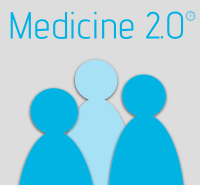The potential of social computing for biomedical research on rare diseases
|
If you are the presenter of this abstract (or if you cite this abstract in a talk or on a poster), please show the QR code in your slide or poster (QR code contains this URL). |
Abstract
Subject: Results of our ongoing Study on the Potential of Social Computing for Biomedical Research in Rare Diseases.
Rationale of our study: Rare Diseases (RDs) affect 6-8 % of the European population, approximately 25 million citizens. There exist between 5000 and 8000 RDs of which 80 % have a genetic origin. Because of their rarity, these diseases are hardly observed in basic diagnostic procedures and pathways by clinicians, resulting in under-diagnosing and/or on longer waiting periods needed to get the correct. Research on rare diseases (RDs) has traditionally been hindered by the fact that cases, clinicians, researchers and resources (pharmaceutical companies have lacked return on investment) are scattered. One of the key characteristics of social computing is its ability to enable powerfully user-created content. Social Computing, also known as the Web 2.0 has the potential to connect up all the actors and stakeholders, especially patients and biomedical researchers. These activities and networks are already allowing a critical mass of knowledge to be gathered, from both patients and researchers - albeit in an unstructured manner.
Objectives: To assess the capability of social networks to enable sustainable research on rare diseases, by allowing patients to be knowledge generators, in synergy with biomedical researchers, and to propose a structured construct to dramatically increase this synergy. Specific objectives of our research include: a) the assessment of opportunities and challenges of social networks for research, from the point of view of patients, formal and informal carers, clinicians, researchers, industry and society; b) a proposal for a construct to structuring and making efficient this potential; c) the derivation of policy options at EU level as to develop this construct; d) the analysis of relevant implications for privacy and security of social computing related activities in this realm.
Applied method: We have applied a 3-step methodology: 1) Browsing current experiences (there are scarce but there are some examples, e.g. Autism: IAN Project http://www.ianproject.org/ and OAR http://www.researchautism.org/); while specifically checking the relevant social computing-based applications, if any. 2) Holding an expert workshop to ascertain the opportunities and challenges; and 3) proposing a structure for this construct, partly based on Science 2.0 theories and also on some practical cases.
Preliminary conclusions: Though RDs affect only 6-8% of European citizens, Information Society Technologies platforms using social computing approaches have a considerable potential for research on RDs, not only as regards its sustainability but also its profitability for both the pharmaceutical industry and the society at large. The body of knowledge on RDs has developed very slowly and is still largely an "uncharted territory". Based on the "Long Tail" theory [1], research on specific rare diseases through the application of social computing is worth - socially, clinically and economically. Cases examined preliminarily confirm our hypothesis. An international expert consultation will serve to systematise and validate our insights so far.
References:
1. Anderson, Chris. The Long Tail - Why the Future of Business is Selling Less of More. Hyperion, New York. 2006.
2. RDCRN - Rare Diseases Clinical Research Network. http://rarediseasesnetwork.epi.usf.edu/
3. Sauer I, Bialeck D, Efimova E, Schwartlander R, Pless G & Neuhaus P. "Blogs" and "Wikis" are valuable software tools for communication within research groups. Artificial Organs 29(1):82-89, Blackwell Publishing, Inc. 2005.
4. Singer, E. Social Networking Hits the Genome. http://www.technologyreview.com/Biotech /20464/
5. Waldrop, M. Science 2.0 - Is Open Access Science the Future? Scientific American Magazine - April 21, 2008. (Also available at http://www.sciam.com/article.cfm?id=science-2-point-0).
Rationale of our study: Rare Diseases (RDs) affect 6-8 % of the European population, approximately 25 million citizens. There exist between 5000 and 8000 RDs of which 80 % have a genetic origin. Because of their rarity, these diseases are hardly observed in basic diagnostic procedures and pathways by clinicians, resulting in under-diagnosing and/or on longer waiting periods needed to get the correct. Research on rare diseases (RDs) has traditionally been hindered by the fact that cases, clinicians, researchers and resources (pharmaceutical companies have lacked return on investment) are scattered. One of the key characteristics of social computing is its ability to enable powerfully user-created content. Social Computing, also known as the Web 2.0 has the potential to connect up all the actors and stakeholders, especially patients and biomedical researchers. These activities and networks are already allowing a critical mass of knowledge to be gathered, from both patients and researchers - albeit in an unstructured manner.
Objectives: To assess the capability of social networks to enable sustainable research on rare diseases, by allowing patients to be knowledge generators, in synergy with biomedical researchers, and to propose a structured construct to dramatically increase this synergy. Specific objectives of our research include: a) the assessment of opportunities and challenges of social networks for research, from the point of view of patients, formal and informal carers, clinicians, researchers, industry and society; b) a proposal for a construct to structuring and making efficient this potential; c) the derivation of policy options at EU level as to develop this construct; d) the analysis of relevant implications for privacy and security of social computing related activities in this realm.
Applied method: We have applied a 3-step methodology: 1) Browsing current experiences (there are scarce but there are some examples, e.g. Autism: IAN Project http://www.ianproject.org/ and OAR http://www.researchautism.org/); while specifically checking the relevant social computing-based applications, if any. 2) Holding an expert workshop to ascertain the opportunities and challenges; and 3) proposing a structure for this construct, partly based on Science 2.0 theories and also on some practical cases.
Preliminary conclusions: Though RDs affect only 6-8% of European citizens, Information Society Technologies platforms using social computing approaches have a considerable potential for research on RDs, not only as regards its sustainability but also its profitability for both the pharmaceutical industry and the society at large. The body of knowledge on RDs has developed very slowly and is still largely an "uncharted territory". Based on the "Long Tail" theory [1], research on specific rare diseases through the application of social computing is worth - socially, clinically and economically. Cases examined preliminarily confirm our hypothesis. An international expert consultation will serve to systematise and validate our insights so far.
References:
1. Anderson, Chris. The Long Tail - Why the Future of Business is Selling Less of More. Hyperion, New York. 2006.
2. RDCRN - Rare Diseases Clinical Research Network. http://rarediseasesnetwork.epi.usf.edu/
3. Sauer I, Bialeck D, Efimova E, Schwartlander R, Pless G & Neuhaus P. "Blogs" and "Wikis" are valuable software tools for communication within research groups. Artificial Organs 29(1):82-89, Blackwell Publishing, Inc. 2005.
4. Singer, E. Social Networking Hits the Genome. http://www.technologyreview.com/Biotech /20464/
5. Waldrop, M. Science 2.0 - Is Open Access Science the Future? Scientific American Magazine - April 21, 2008. (Also available at http://www.sciam.com/article.cfm?id=science-2-point-0).

Medicine 2.0® is happy to support and promote other conferences and workshops in this area. Contact us to produce, disseminate and promote your conference or workshop under this label and in this event series. In addition, we are always looking for hosts of future World Congresses. Medicine 2.0® is a registered trademark of JMIR Publications Inc., the leading academic ehealth publisher.

This work is licensed under a Creative Commons Attribution 3.0 License.



